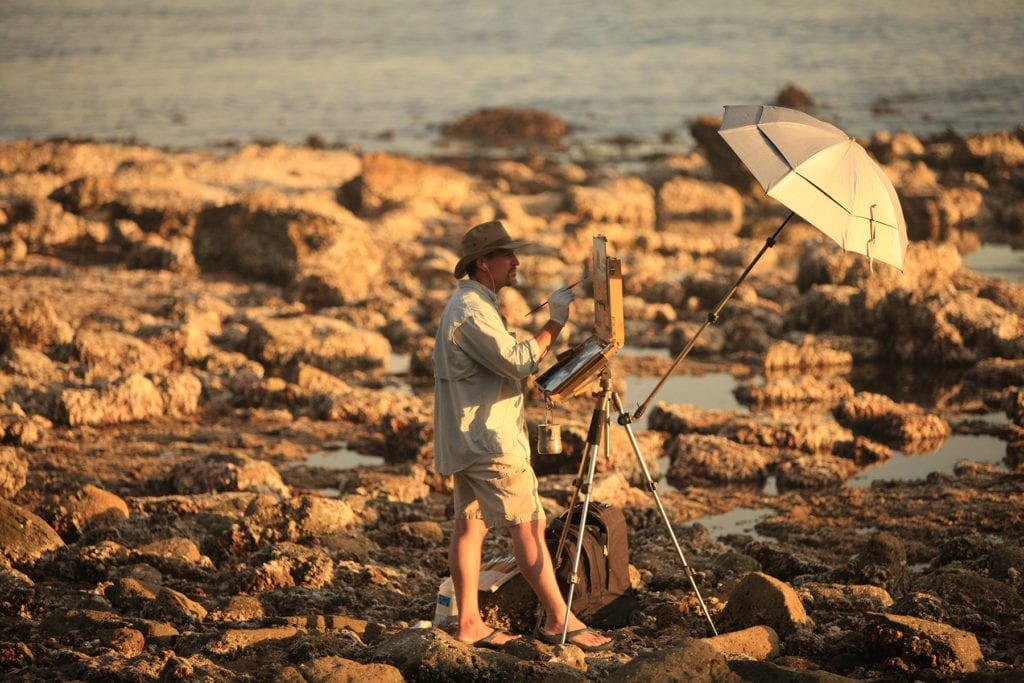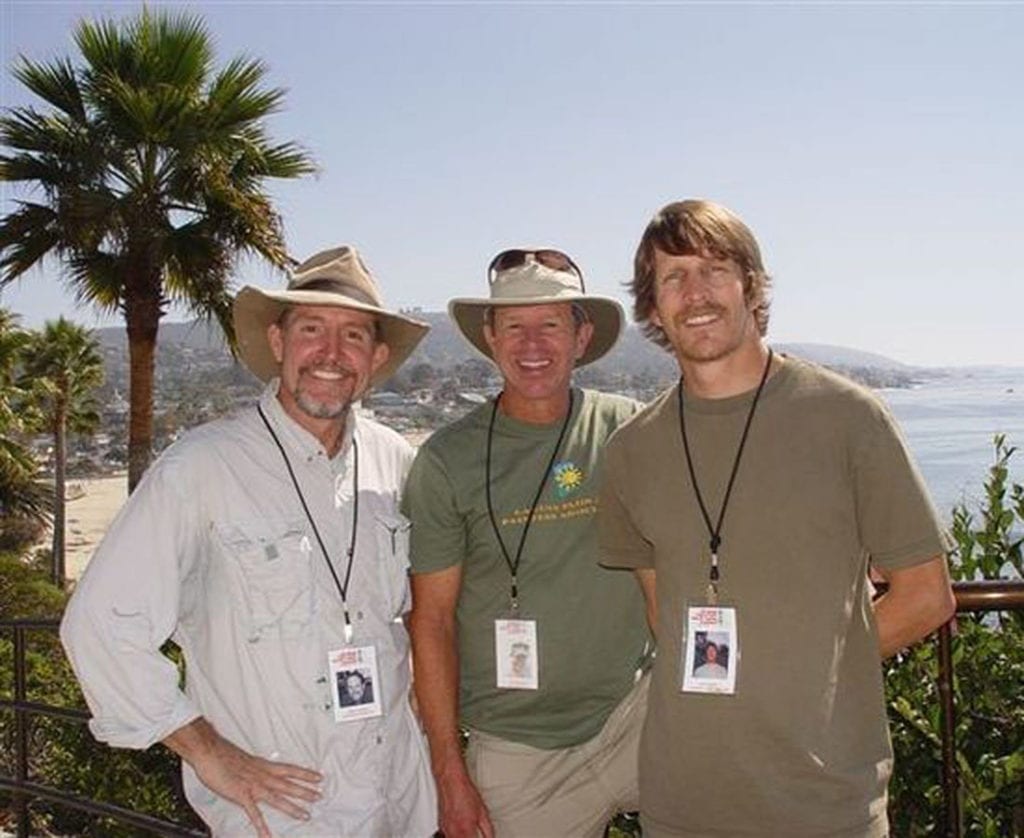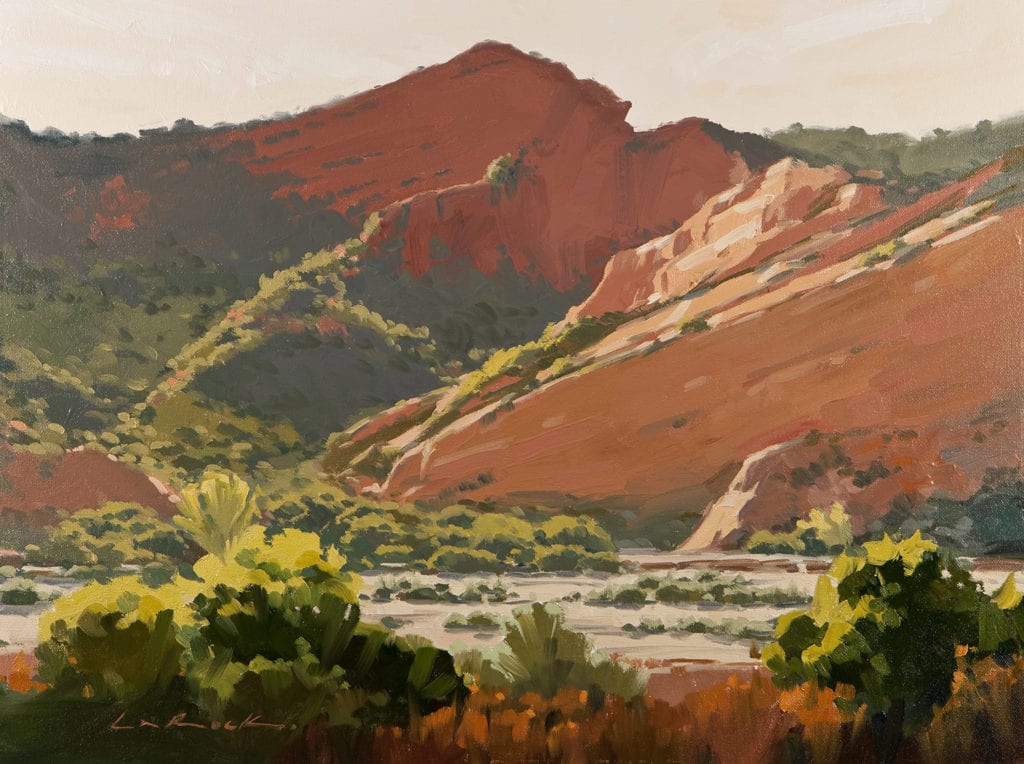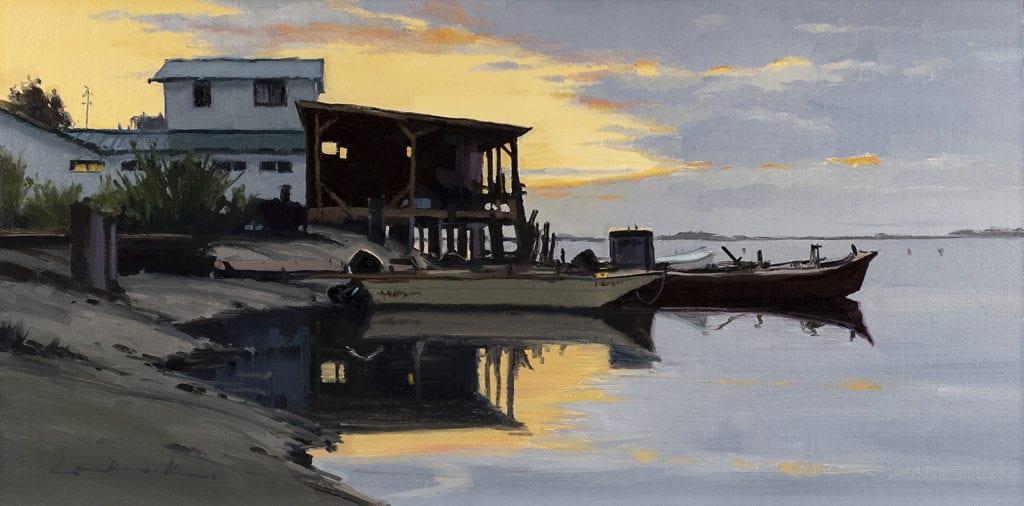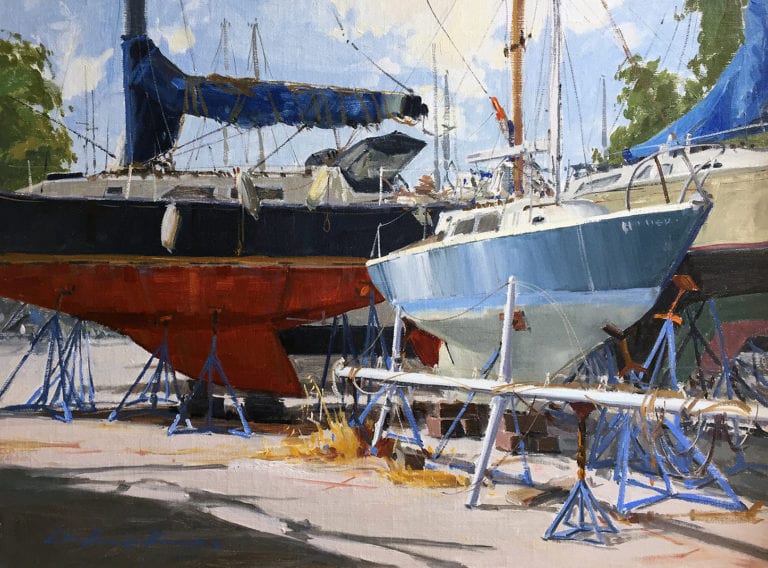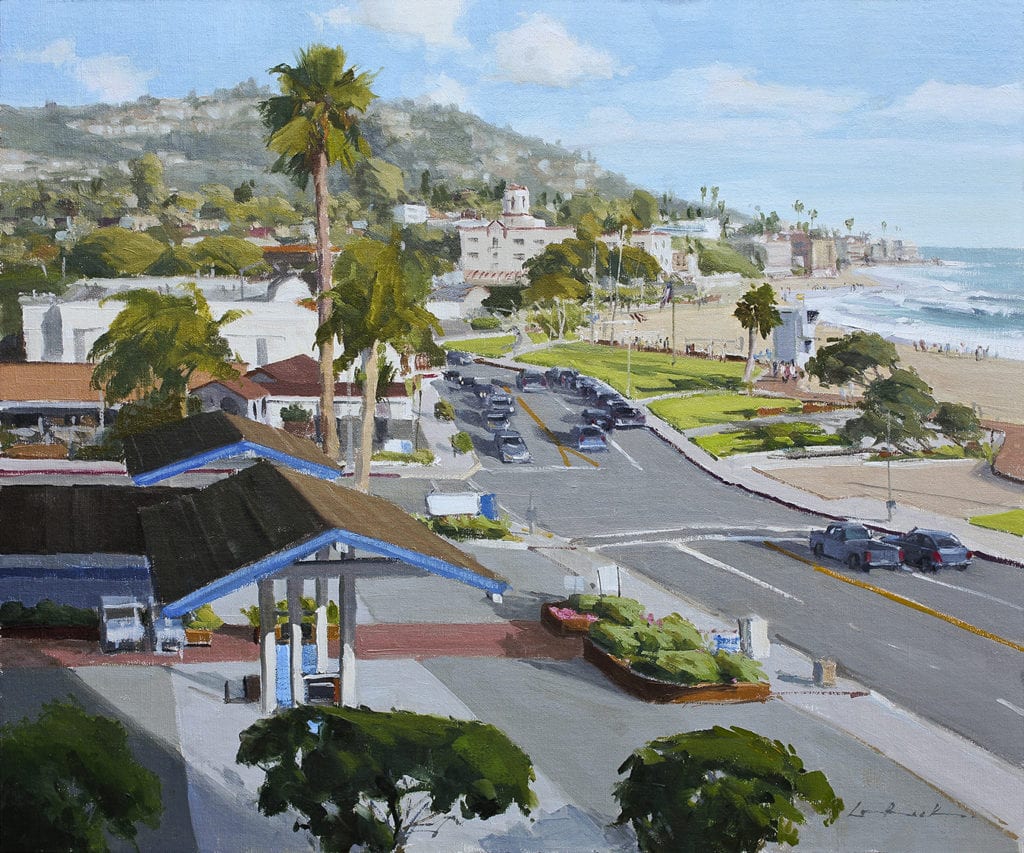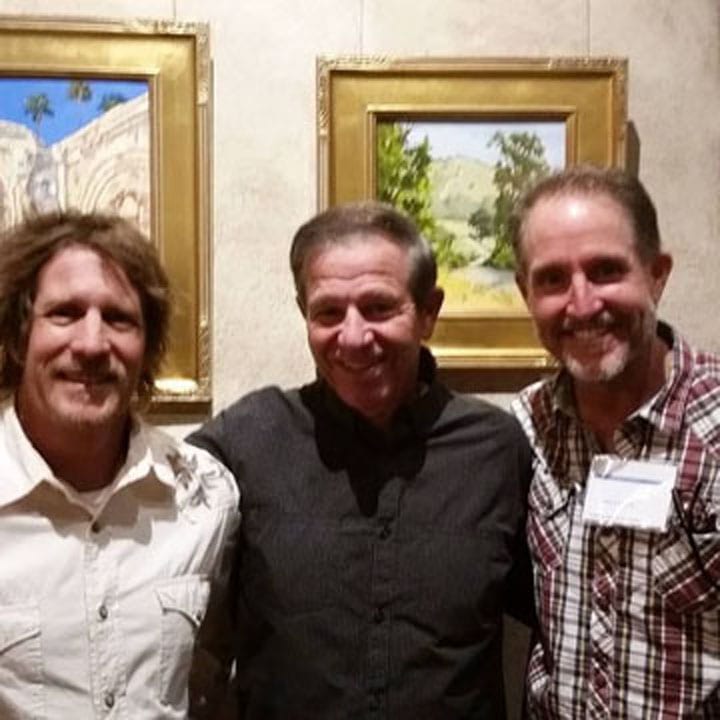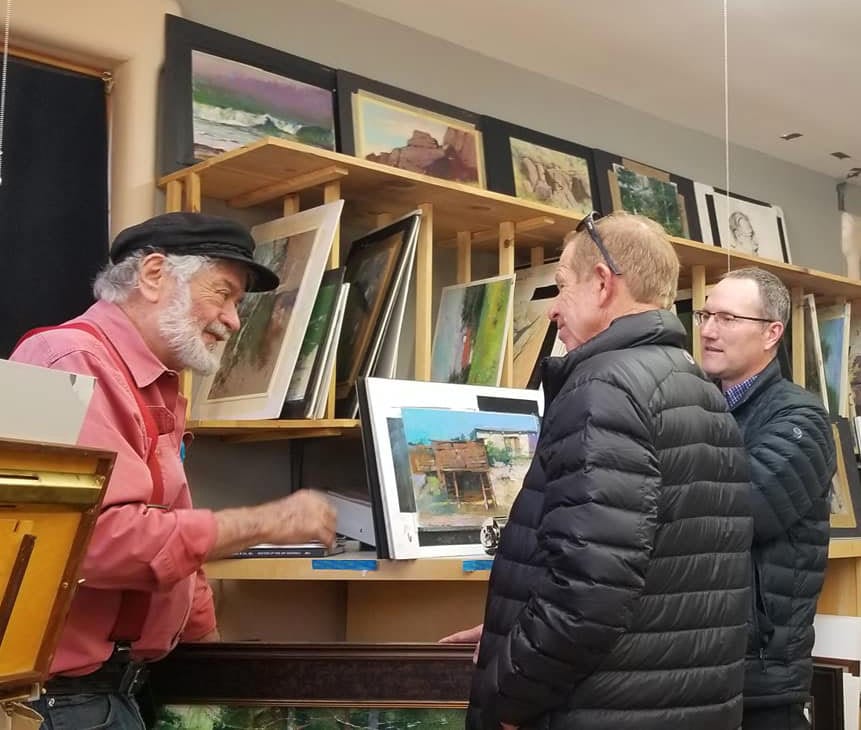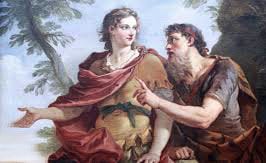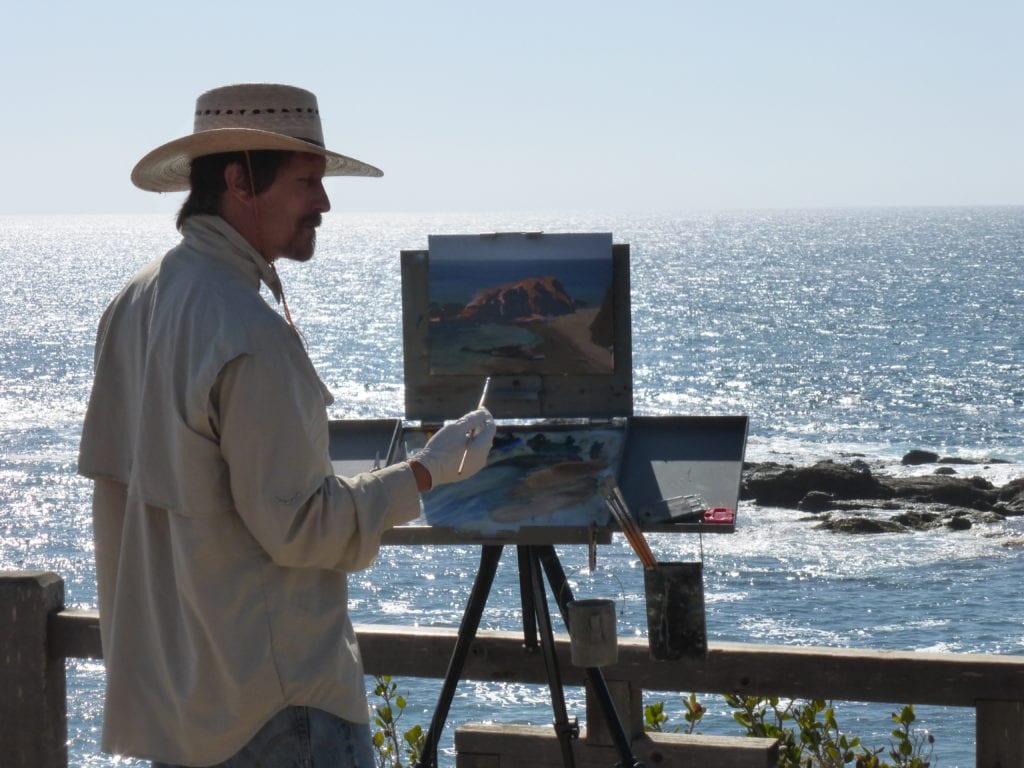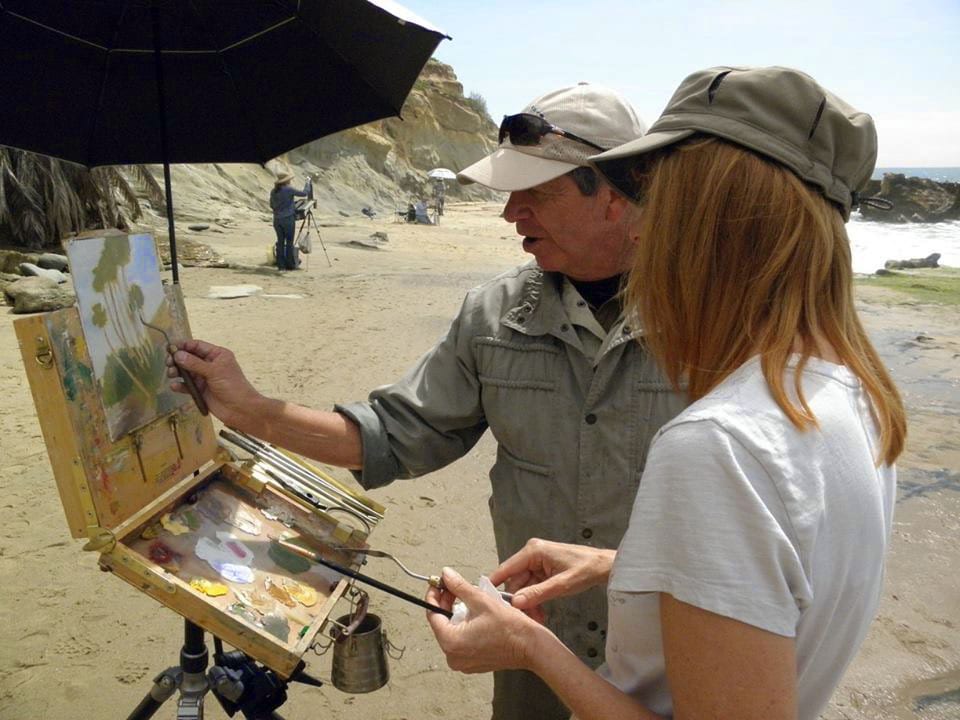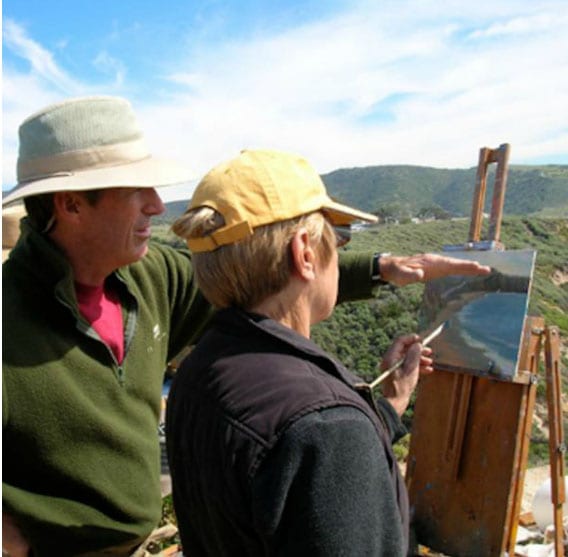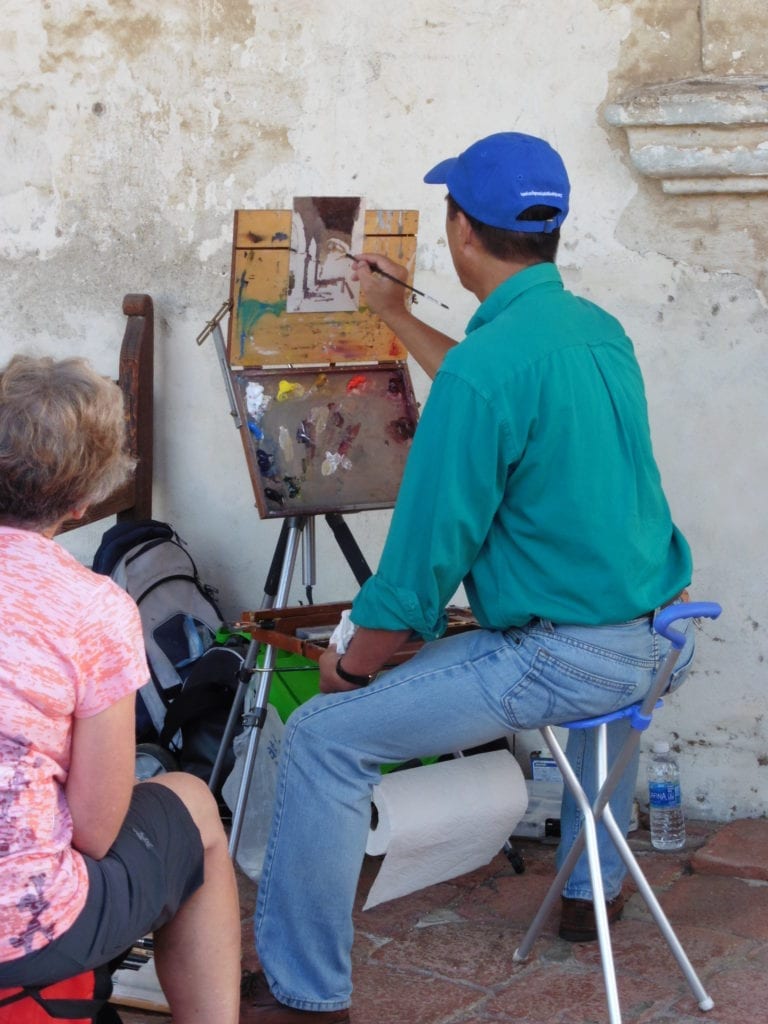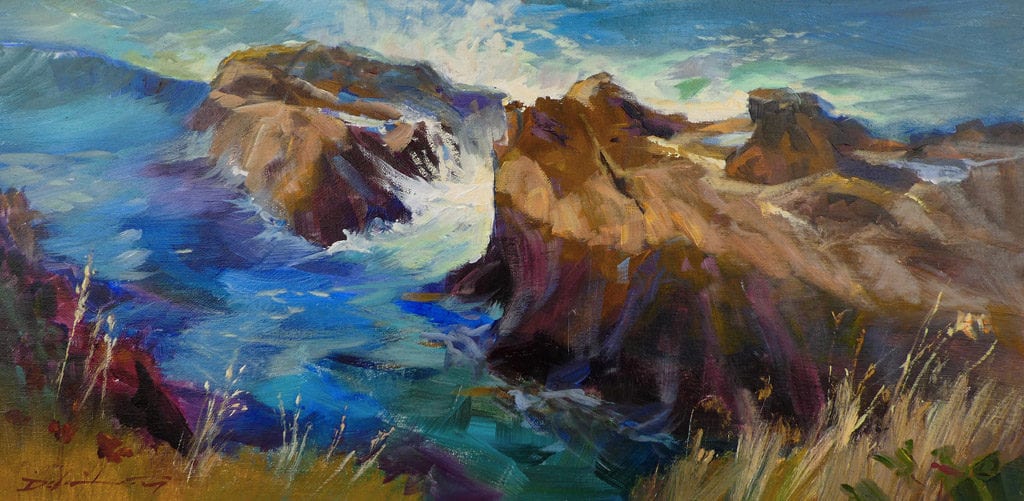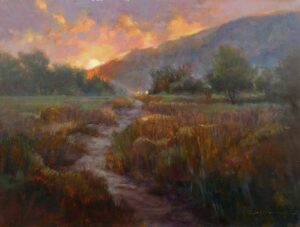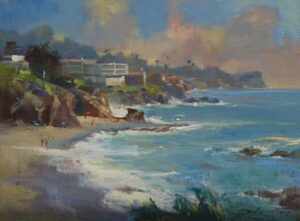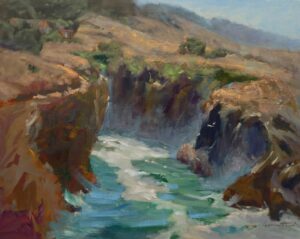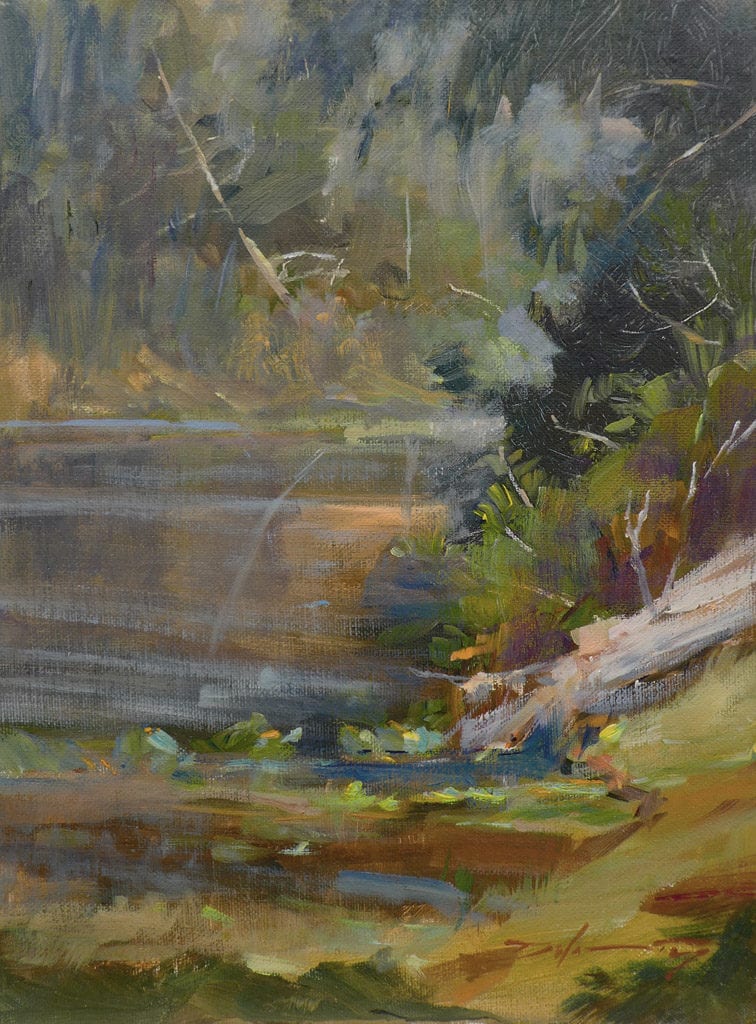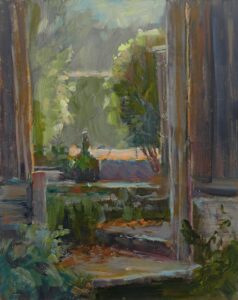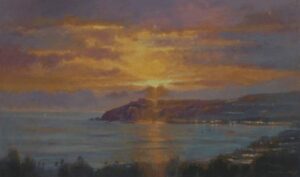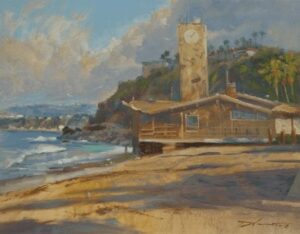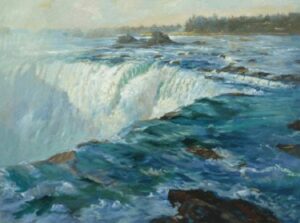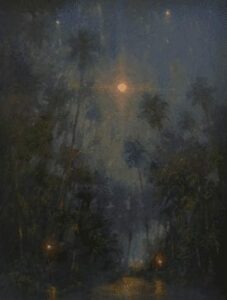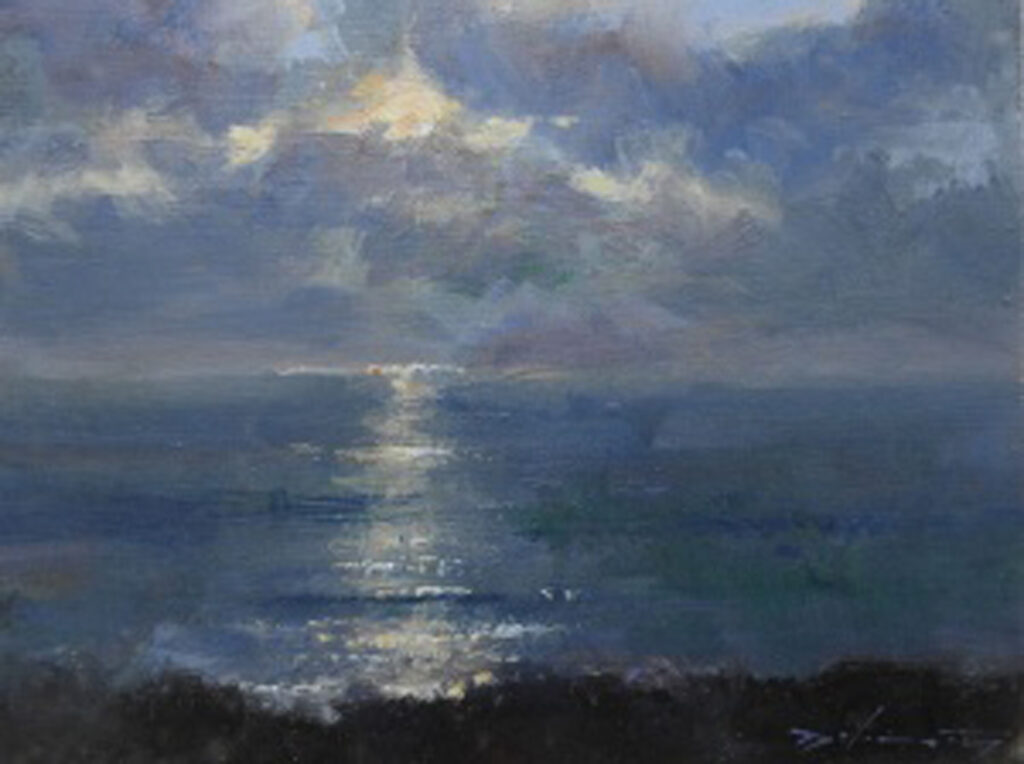
8″ x 10″ – Oil
(Essay excerpt from book published 2021, Beauty Unites Us, by Rick J. Delanty)
Artists are revolutionaries, to some degree. Their responses to crisis, confusion, and condemnation in social situations can often be seen in their artworks. The creation of an artwork itself is a statement that the human spirit has a creative voice, is inspire-able, worthy of development, and capable of transforming others and life itself. Artists can allow the light that is within them to shine outwards, to touch those who are depressed, downhearted, or even despairing, especially in challenging times like these. A woman in San Clemente, California, has made the news by bringing her piano outside to play it in the driveway for her neighbors. In Italy, singers project mini-operatic presentations from their balconies. In our neighborhood, kids are doing chalk drawings on the sidewalk for fun.
My own paintings of the natural world are celebrations of all that is good in life, and in heaven. An artwork that celebrates beauty is more than a symbolic shaking of the fist in times of trial–it is a blow for freedom of the spirit, and a bugle-call against both oppression and depression. Inspiring artworks encourage us to believe, rather than bend or break in times of crisis. Art and Nature encourage us to look within, and Beyond. (end of excerpt)
“You can look anywhere and find inspiration.” —Frank Gehry
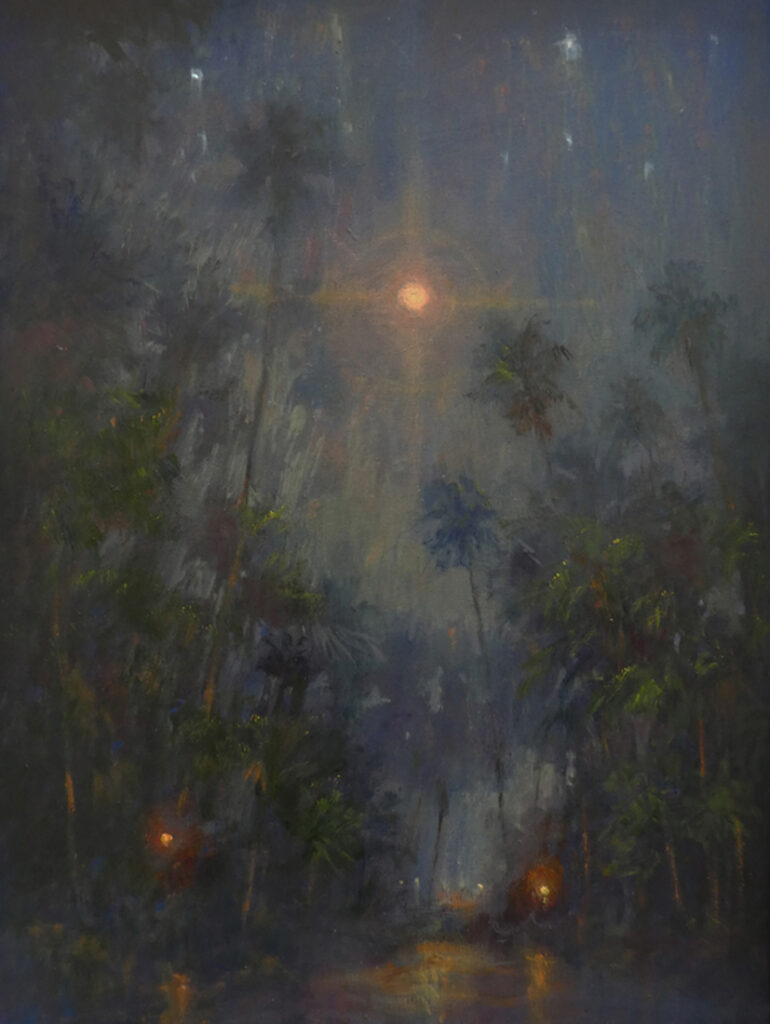
24″ x 18″ – Oil
The chaos and confusion of the pandemic was whirling about the world when I wrote the above words in 2020. As an artist, I was wondering what I could do to help defuse the despair. I thought I might create Facebook posts with a written message, accompanied by a painting, pointing out that Beauty and hope for the future still existed, despite evidence to the contrary.
My idea had its roots in the concept of the Hebrew words “Ab’ra ke’ Dab’ra,” meaning “I will create as I speak.” Though we may be more familiar with this term as it relates to magic and magicians, I believe that it has much more significance to daily life: the concept that it is entirely possible to create the reality we want through our thoughts, which when we speak them and act on them, become reality. Doing good and creating meaningful work is made possible through positive thoughts and intentions.
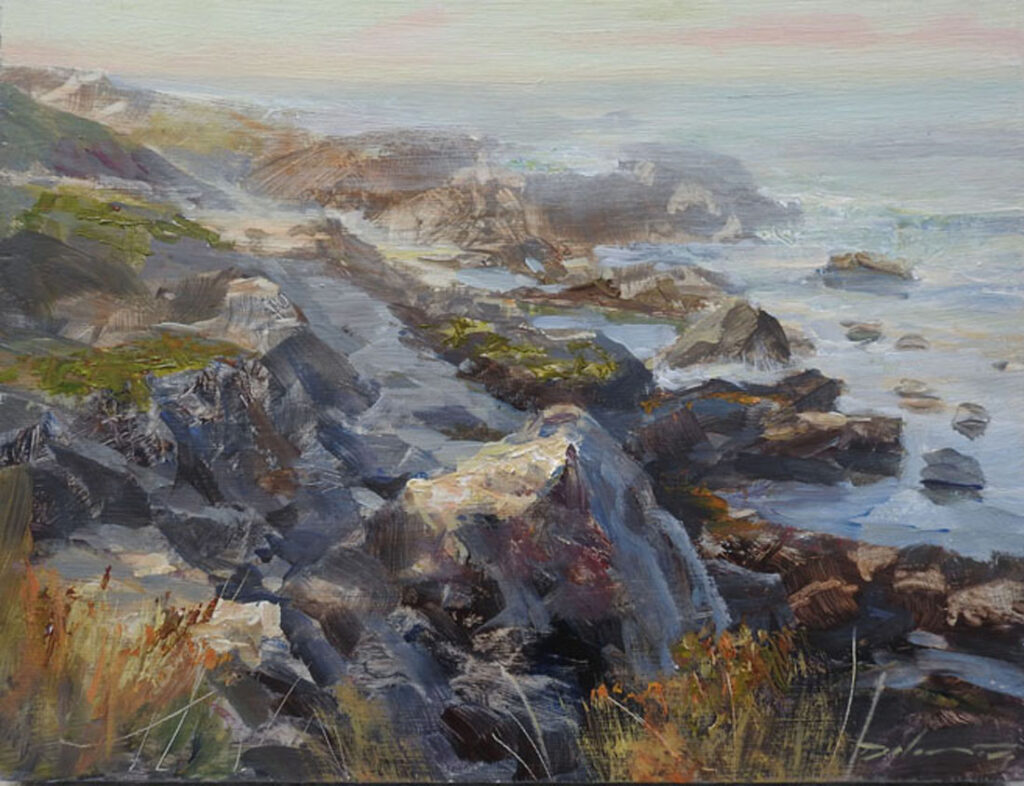
11″ x 14″ – Acrylic
Art comes from a life lived consciously and fully, and not necessarily one in which everything is known, safe, and easy to master. –Christopher Volpe, artist
For an artist, this is why intention, mindset, and attitude are all-important in the creative process.
Like building a house, the desired result (a meaningful artwork) is achieved only through mindful preparation.
Regarding the pandemic, we learned that a misinformed, confused and panicked mindset yields chaos, hopelessness, and widespread contagion. But as artists, we also learned (or were reminded again) that Beauty, goodness and truth are necessities — like water, food, and air. We were reminded that artists perform a very real function in our society. The work an artist does may be considered the very foundation of civilization; the fruits of our labor has the power to inspire those who appreciate it to live at their very best. The thoughts and mindful creativity of an artist can divert, calm, and create a better world for all of us who need it. Ours is a profession that points to the heavens, during times of crisis when all eyes are blinded by dust.
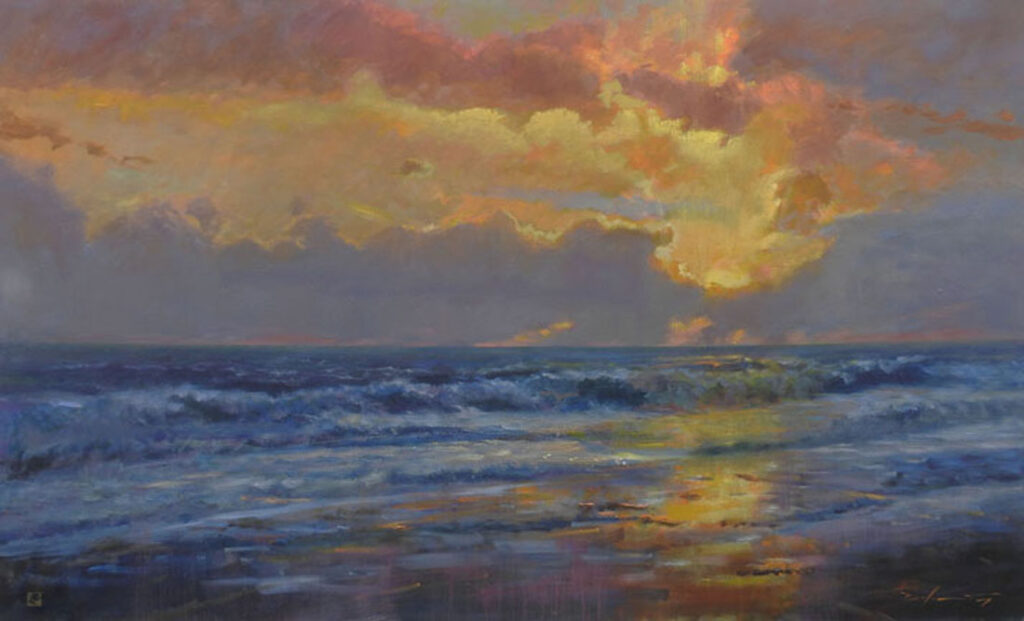
36″ x 60″ – Oil over acrylic
“Great art is the outward expression of the inner life of the artist, and this inner life will result in his (her) personal vision of the world.” -Edward Hopper
The artist who seeks and creates Beauty in her work receives a dual benefit: first, her vision of the world has the potential to bless the audience, and herself. Secondly, the artist’s audience receives a more positive vision of reality that the artist thinks, speaks, and paints into existence. Artists have the ability to make the world a better place.
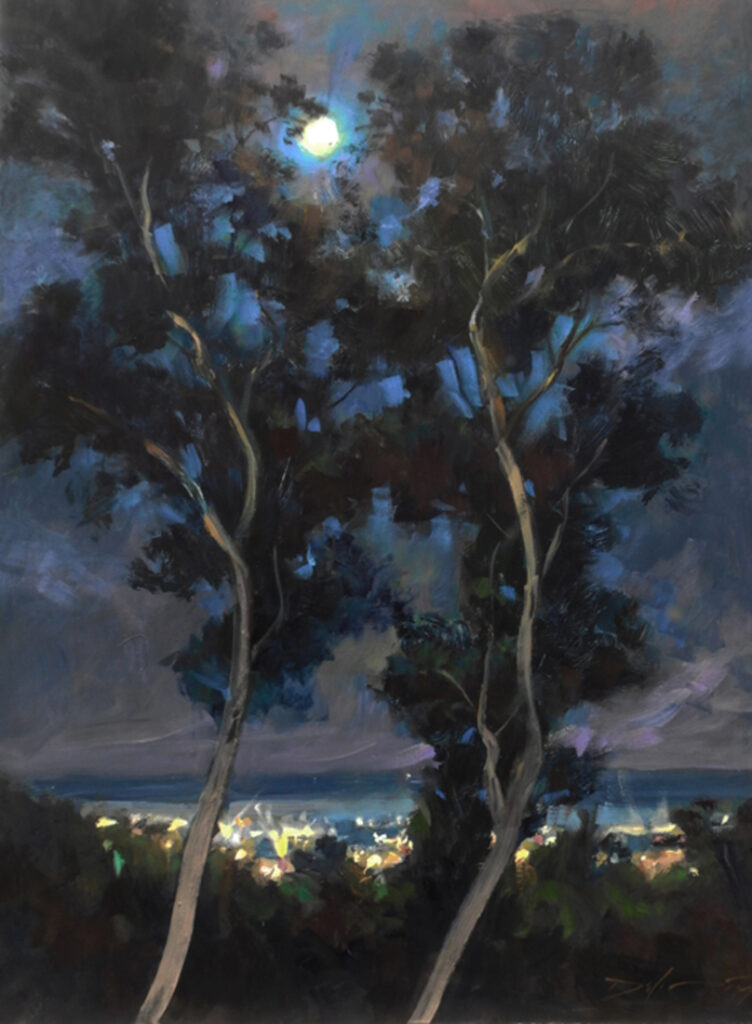
24″ x 18″ – Acrylic
